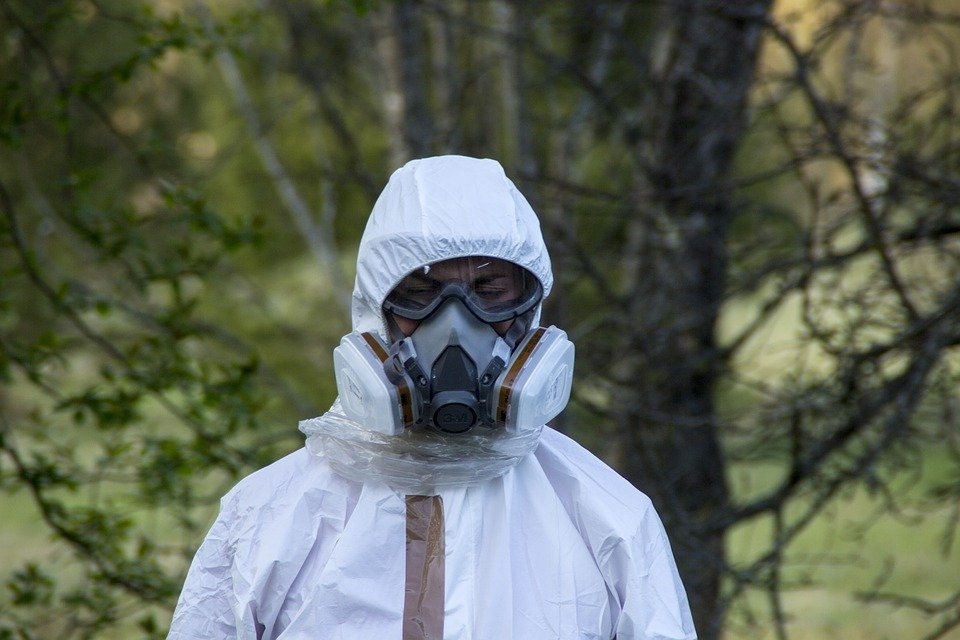Do I need a risk assessment before working on asbestos? Find out about the UK regulations and requirements when working with asbestos.
Managing and Working with Asbestos
Several naturally occurring minerals that have been connected to a range of major health problems are collectively referred to as asbestos. An employer must make sure that a proper asbestos risk assessment is done before work starts if a workplace includes asbestos. This risk assessment will include details on the dangers that are present and the safety measures that must be taken.
This material will be of particular relevance to employers, asbestos contractors, and those with obligations under asbestos legislation, as well as those workers now in the greatest danger from asbestos exposure. It is forbidden to use, supply, or import any kind of asbestos. However, many structures still retain asbestos-containing materials, along with certain machinery and equipment (ACMs).
To prevent people from dying from asbestos-related illnesses in the future, asbestos must be treated properly. Those who perform building maintenance and repair are particularly vulnerable. If you are responsible for managing a building's care and repair, you are also responsible for overseeing any asbestos there. You have a legal duty to handle asbestos, which includes protecting people from asbestos fibres (under regulation 4 of the Control of Asbestos Regulations 2006).
There are several measures you might take as a consequence of the asbestos study and asbestos management plan. Remember that asbestos does not necessarily need to be removed just because a structure has it. In certain cases, keeping it in place and maintaining it poses a larger danger than the removal method itself.
Identify Whether Asbestos is Present
You should investigate the location and get representative samples of the material you will be working with tested if there is little to no information available and you suspect asbestos may be present. Alternately, you might assume that every object you need to disrupt has asbestos and take the appropriate safety precautions for the highest risk scenario.

Visual inspection and comparison of a suspected location to an online example might be difficult when trying to find asbestos. As a result, you must send a sample of the material to an accredited asbestos testing facility if you think that a portion of your home contains asbestos.
The easiest option to get a firm confirmation if there is asbestos on your house is in this way. A comprehensive asbestos audit, which includes lab testing on all items suspected of containing the chemical, is legally required for commercial premises. In the end, the results of these tests will assist establish the risk level provided by various construction materials by revealing whether the asbestos present is friable or non-friable.
How to Conduct an Asbestos Risk Assessment
If your job is likely to disrupt or harm asbestos-containing material, your employer or the property manager must ensure that an asbestos risk assessment is conducted (ACM). This comprises assessing the possible health hazards and choosing the appropriate safety precautions to make the task safely.
Who is Qualified to Perform an Asbestos Risk Assessment?
Anyone on the property, including the employer, a professional, or a specific employee, may do the risk assessment. The individual doing the risk assessment must be qualified to do so.
The risk assessor is necessary to comprehend the hazards associated with asbestos, how these hazards may impact individuals, the requirements of the Control of Asbestos Regulations 2012, and the steps that must be taken to maintain workplace safety. The individual selected to do the risk assessment must be informed about the risks associated with asbestos as well as the necessary risk reduction techniques.

Although asbestos is now completely outlawed in the United Kingdom, older structures frequently contain asbestos-containing materials (ACM).
This is hazardous because destroying these materials can release their fibres into the air, where they can be breathed, increasing the chance that workers will acquire a number of potentially fatal illnesses, including mesothelioma and asbestosis.
Due to this, before beginning work on a structure that could contain asbestos, every employer must make sure that an adequate risk assessment is carried out. This risk assessment must identify any potential dangers and the steps that must be done to reduce or eliminate them.
This competent individual must also comprehend the risks associated with dealing with asbestos-containing products and be able to predict the degree of exposure, which calls for a high level of skill. Finally, a complete risk assessment must be performed beforehand to give ample time to install any necessary safety measures.
The Primary Steps of an Assessment of Asbestos Risk:
Identify the Health Risks
The competent person must first determine what the health risks are. This entails recognising the common workplace dangers that may endanger people, including working at heights, manual handling, the use of abrasive wheels, and the use of hazardous chemicals.
To do this, the qualified individual should visit the location and physically assess the dangers, interact with workers or site owners, check any prior documentation for the building, and reference any asbestos studies or asbestos tests that have already been conducted.
When it comes to asbestos, evaluating the hazards entails figuring out what kinds and how much of the material is there as well as its condition, friability, and projected amount of exposure.
Determine Who The Dangers Might Hurt
Who is most likely to be at risk from the listed threats must then be determined by the competent person. It might be individual staff who are working on or near the ACMs, or it could be customers, site visitors, or other members of the public who are present on the property when the work is being done.
In order to ascertain which individuals are most likely to be put at risk, the competent person will need to assess the expected degree of exposure to asbestos fibres at each location of the premises.
Determine the Safety Measures Required to Eliminate or Minimise the Hazards

The competent person is also in charge of choosing the controls required to minimise or eliminate risks or, in cases where doing so is not reasonably practicable, to eliminate hazards.
There are steps that may be taken to decrease exposure even if the dangers from asbestos are frequently not eliminated, especially if the job done requires workers to work directly on or with ACMs.
Providing protective gear and equipment, constructing local ventilation, enclosing portions of the premises, and controlled soaking of particular portions of the premises are a few examples of safeguards.
Take Note of the Conclusions and Safety Measures, then Apply them
Every step of the risk assessment must be recorded, whether manually on paper or electronically on a computer or other electronic device, according to the certified individual.
This requires maintaining a record of all the hazards that have been identified, the possible victims, and the chosen risk-reduction techniques. Additionally, a record of the tasks being carried out, the people doing them, and the projected time frame for the job must be maintained.
All workers and anybody else identified as being at risk should be thoroughly informed of the control measures before they are put into action. Everyone who may be damaged must be aware of the dangers, know how to avoid being exposed to asbestos fibres, and know what to do in an emergency.
The personnel should have access to this information on the property. Emergency measures provide information on how to leave the area, manage any asbestos waste, disinfect any clothes, tools, or equipment that may have come into contact with asbestos fibres, and what to do if you accidentally exposed yourself to asbestos.
When Necessary, Review and Revise the Risk Assessment
Until something about the premises changes, the risk assessment is still valid. The competent person must make sure that the risk assessment is evaluated and updated as necessary if something changes.
Employee input, any near-misses or accidents, the addition of new tools or equipment, new employees, or the discovery of new risks are changes that might warrant a review.
Are you looking for professional asbestos surveys in Aberdeen and Aberdeenshire? Learn more about our detailed inspection and reporting services using the link below:

